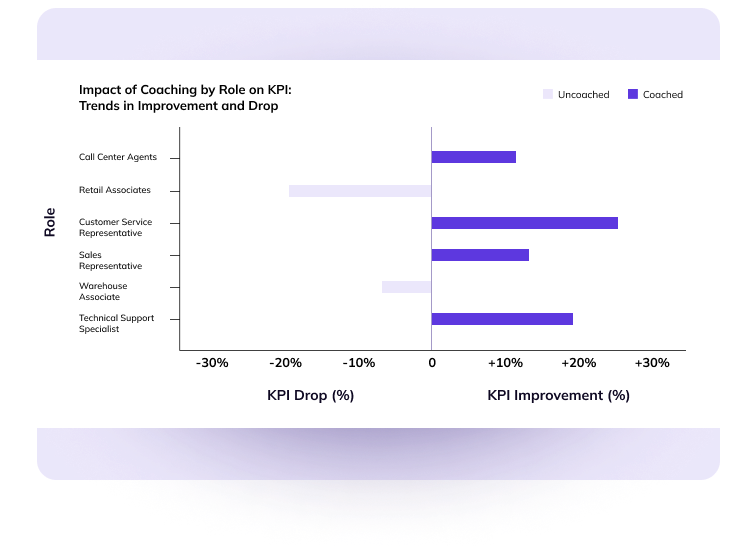In today's fast-paced business environment, investing in employee learning and development (L&D) has become more crucial than ever. Technology advancements give L&D professionals many skilling options that improve employee performance and save costs.
However, a study revealed that 19% of L&D practitioners fail to get leadership buy-in or support for L&D initiatives, resulting in a hindrance to employee development. In this blog, we'll explore how skilling technology enables organizations to achieve cost efficiencies that L&D professionals can utilize to obtain leadership buy-in for investment.
How Skilling Technology Helps in Cost Savings
The prospect of upskilling can be overwhelming as it entails deciding on the best course of action for advancement and devoting time and resources to learning new skills. Hence, embracing a continuous learning culture and investing in the right skilling technologies are essential steps towards realizing the below-listed cost efficiencies and building a skilled workforce for the future.
Reduced training costs
Traditional training methods often involve significant expenses related to venue rentals, travel costs, printed materials, and instructor fees. However, skilling technologies such as Learning Experience Platforms (LXP) and other virtual training platforms eliminate many of these expenses. By delivering training modules online, organizations can save on venue rentals, travel expenses, and printing costs. Additionally, with self-paced learning modules, employees can access training materials at their convenience, reducing the need for costly instructor-led sessions.
Enhanced employee productivity
Adopting skilling technology empowers staff with essential skills, enhancing role efficiency. On-demand training resources enable swift skill set acquisition, boosting productivity. Moreover, personalized learning paths customized to each employee ensure that training efforts are targeted and effective, maximizing the return on investment (ROI).
Reduced turnover costs
Employee turnover can be a significant expense for organizations, involving costs associated with recruitment, onboarding, and lost productivity during the transition period. However, by prioritizing employee development through skilling technology, organizations can increase employee engagement and job satisfaction, leading to higher retention rates. When employees feel supported in their professional growth and have opportunities for advancement within the organization, they are more likely to stay, reducing turnover costs in the long run.
Figure 1: Boost retention by strengthening job readiness through assessments
Compliance and risk mitigation
Non-compliance with industry regulations or lack of adherence to internal policies can result in costly fines, legal fees, and reputational damage for organizations. Skilling technologies enable organizations to deliver role-based training efficiently and effectively, ensuring that employees are aware of all the regulatory requirements and best practices. By mitigating compliance risks through comprehensive training programs, organizations can avoid costly penalties and safeguard their reputation.
Data security requirements
Most businesses are subject to strict data security regulations. Skilling technology ensures that employees are well-versed in relevant regulations within their area of expertise, thus reducing the risk of legal issues. According to IBM’s Cost of a Data Breach Report 2023, regular security training for employees can help reduce the cost of a data breach by an average of $232,867.
Agile skill set development
In today's dynamic business landscape, organizations must adapt quickly to changing market demands and technological advancements. Skilling technologies facilitate agile skill set development by providing employees with access to up-to-date training content on emerging trends and technologies. By continuously upskilling and reskilling the workforce, organizations can stay ahead of the curve, remain competitive, and avoid the costs associated with skill gaps and outdated knowledge.
Figure 2: Close skill gaps to improve performance
Investing in a skilling technology not only benefits employee development but also yields significant cost savings for organizations. By leveraging these technologies, organizations can achieve long-term success in today's competitive business landscape. Skilling technology also enables businesses to streamline their training procedures and minimize overhead expenses, leading to substantial long-term cost savings.
Cost Consideration: Traditional Training Methods vs. Skilling Technology
With the emergence of advanced skilling technologies, organizations have opportunities to optimize their training processes to fill the skill gaps needed for the future and achieve cost efficiencies.
According to Gartner, almost 64% of managers agree their staff won’t be able to keep pace with the skills needed in the future. Also, 70% of employees agree they haven't mastered the skills needed even today. Below is a guidance that L&D professionals can use to get leadership buy-in for skilling technology compared to traditional methods.
Initial investment
Traditional training methods often require various significant upfront investments in infrastructure, materials, and instructor fees. Companies may need to allocate funds for renting training venues, purchasing printed materials, and compensating trainers. On the other hand, implementing skilling technology typically involves a single fixed investment in software licenses (or monthly subscriptions). While the initial cost of acquiring skilling technology may seem higher, it often proves to be more cost-effective in the long run because of its scalability and efficiency.
Infrastructure costs
Traditional training methods frequently necessitate physical infrastructure, such as training rooms or classrooms, which incur ongoing maintenance expenses. Additionally, travel costs may arise when employees need to attend off-site training sessions. In contrast, skilling technology eliminates the need for dedicated physical spaces and allows employees to access training materials remotely. By leveraging cloud-based platforms and virtual classrooms, organizations can significantly reduce infrastructure costs associated with training.
Instructor fees and travel expenses
Hiring instructors or subject matter experts to deliver training sessions can be costly, especially for specialized topics or niche skills. Moreover, arranging travel for trainers or sending employees to off-site training events adds to the overall training expenditure. Skilling technology offers a cost-effective alternative by providing self-paced online courses and interactive multimedia content. These digital learning resources eliminate the need for costly instructor fees and minimize travel expenses, resulting in substantial cost savings.
Time efficiency
Traditional training methods often require employees to dedicate specific time slots to attend training sessions, leading to productivity losses during work hours. Moreover, coordinating schedules for in-person training can be challenging, especially for geographically dispersed teams. Skilling technology offers flexibility and convenience by allowing employees to access training materials anytime, anywhere, and at their own pace. By minimizing downtime and accommodating individual learning preferences, organizations can optimize employee productivity and reduce opportunity costs associated with traditional training approaches.
Scalability and customization
As businesses grow and evolve, the demand for training and development may fluctuate, requiring scalable solutions that can adapt to changing needs. Traditional training methods may struggle to accommodate rapid scalability or customization requirements, leading to inefficiencies and increased costs. Skilling technology provides modular and customizable training programs that organizations can easily scale up or down based on their requirements. With features such as personalized learning paths, adaptive skill assessment, and real-time progress tracking, organizations can tailor training initiatives to meet specific objectives while optimizing costs.
While traditional training methods have served their purpose, they often come with inherent limitations and cost implications. Embracing skilling technology enables organizations to overcome these challenges by streamlining training processes, reducing overhead costs, and maximizing ROI on learning investments. By making a strategic shift towards digital learning solutions, organizations can achieve greater cost efficiencies while empowering employees with the skills (hard and soft skills) they need to succeed in today's competitive business environment.
Conclusion
Deploying modern skilling technology is a good way to train and empower your employees while saving costs for the business. Skilling technologies also help in several other ways, such as reducing attrition, supporting business growth, boosting new-hire performance, and preparing teams for new projects. L&D professionals can showcase the cost savings in a business case to get leadership buy-in for deploying skilling technology.
Download our purple paper now to learn more about how to build a compelling business case for investment in a skilling platform. Discover key tips, cost-saving advice, and examples of ROI analysis to build a successful business case.










